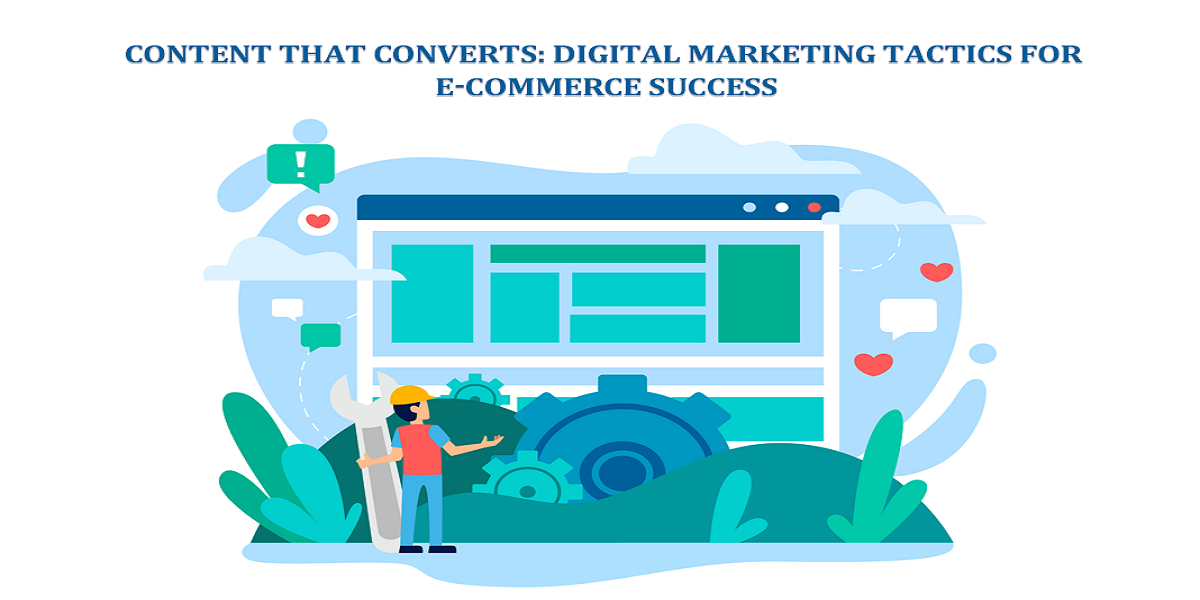
The Angular Development Roadmap: Navigating the Future of Web Applications
- By Kamal Singh
- 15-09-2023
- Web Development
Being ahead of the curve is crucial in the quickly developing industry of web development. Angular is one of the frameworks that has endured the test of time. With the help of the potent front-end framework known as Angular, which was created and is maintained by Google, programmers can create dynamic and adaptable web applications. One must understand the roadmap in order to properly navigate the world of Angular programming. This article will discuss the history, present situation, and predicted future developments of the Angular development plan.
A Brief History of Angular
It is acknowledged that the ground-breaking framework Angular, which made its debut as AngularJS in 2010, popularised the idea of two-way data binding. The data between the model and the view was automatically synced, allowing Angular Js web development company to create dynamic web applications. But as web programming improved, framework demands increased as well.
For more complicated applications, AngularJS began to exhibit limitations, particularly in terms of performance and maintainability.
Google released Angular 2, a total reimagining of AngularJS, in 2016. Improved modularity, a component-based architecture, and speed optimizations were implemented in this version. Later iterations of the framework—Angular 4, 5, and so forth—improved it, added new features, and improved performance.
Key features of Angular
There are several essential qualities of Angular that contribute to its success as a web development framework, including:
1. Component-based Architecture
Basic building components that are reusable and modular make up the Angular framework. The application's codebase can be managed and maintained more easily because of the way components contain templates, styles, and functions.
2. Dependency Injection
Dependency injection is used by Angular to improve testability and modularity. This promotes better component interactions and unit testing by enabling components to seek dependencies from external sources.
3. Single-page Application (SPA) Support
Single-page applications (SPAs), in which a single HTML page morphs dynamically when users interact with the software, are a fantastic usage for Angular.
Comparatively speaking, this approach offers a more user-friendly experience than traditional multi-page programmes.
4. TypeScript Integration
TypeScript, a JavaScript superset with static typing, is used to create Angular. Programmers can use TypeScript to improve the readability and quality of their code while also spotting issues earlier in the development cycle rather than at runtime.
5. CLI (Command Line Interface)
The Angular CLI streamlines the project setup, development, and deployment procedures. It reduces the amount of manual work required to construct an Angular project by offering commands for generating components, services, modules, and more.
6. RxJS and Reactive Programming
Reactive Extensions for JavaScript (RxJS) are used by Angular to manage asynchronous events and actions. This makes it simpler for developers to create event-driven, responsive applications.
The Current State of Angular
The most recent version of Angular has developed into a reliable and flexible framework that is still used to power a variety of web applications around the world before the knowledge cutoff in September 2021. The following are some essential Angular development components at the moment:
1. TypeScript Integration
TypeScript has been chosen by Angular as its core programming language. A superset of JavaScript called TypeScript provides more tool support and static typing. The productivity, maintainability, and quality of the code have all been greatly enhanced by this integration.
2. Component-Based Architecture
The architecture of Angular is made up various parts. The HTML, CSS, and JavaScript logic needed to render a particular UI element is contained in a component. Due to the reusability that this modularity allows, complex applications are simpler to maintain and extend.
3. Reactive Programming
Utilising RxJS (Reactive Extensions for JavaScript), Angular uses reactive programming concepts to handle asynchronous actions and data streams. The administration of intricate data flows within programmes is made simpler by this method.
4. Angular CLI
An effective tool for automating many development activities is the Angular Command Line Interface (CLI), which can create components, services, and modules, run tests, and create code that is suitable for production. Workflows for development are substantially sped up using the CLI.
5. Material Design
A UI component framework called Angular Material adheres to the concepts of Google's Material Design. It provides a large variety of pre-built components to aid developers in designing user interfaces that are both aesthetically pleasing and unified.
6. Ahead-of-Time Compilation
During the build process, Angular uses ahead-of-time (AOT) compilation to transform Angular templates and components into highly optimized JavaScript code. This optimization speeds up loading times and enhances application performance.
The Angular Development Roadmap
The Angular development roadmap describes the framework's future course and anticipated improvements. The following trends were anticipated to influence the development of Angular, even though specifics may have altered since the knowledge cutoff in September 2021:
1. Improved Performance
Ongoing focus on performance improvements is still a crucial part of Angular's roadmap. To make Angular apps even quicker and more effective, initiatives are being taken to decrease bundle sizes, improve AOT compilation, and take advantage of contemporary browser features.
2. Ivy Renderer
Ivy, a fresh rendering engine, was unveiled with Angular 9. Performance is improved, debugging is better, and bundle sizes are improved. It is anticipated that Ivy will replace the dated View Engine as a default rendering engine as it develops.
3. Enhanced Developer Experience
With features like clearer error messages, increased debugging capabilities, and stronger tooling integration, the development experience for Angular is expected to improve. These improvements will make it easier for developers to find problems and fix them.
4. Mobile and PWA Support
The ability of Progressive Web Apps (PWAs) to deliver a native-like experience on the web is helping them gain popularity. The roadmap for Angular includes features and enhancements that make it simpler to create PWAs, guaranteeing that Angular applications run well across a variety of devices.
5. Integration with Backend Technologies
ASP.NET Core and Node.js are two common backend technologies used in conjunction with Angular. The plan intends to improve integration by giving developers easy-to-use tools and libraries to link their front-end programmes with back-end functions.
6. Continued Community Engagement
The future of the framework is significantly influenced by the Angular community. The roadmap emphasizes keeping lines of communication open with the community, gathering suggestions, and resolving issues in order to keep Angular a developer-friendly framework.
1. Getting Started with Angular: The Foundation
Understanding Angular:
A powerful open-source JavaScript framework called Angular was created by Google. It is intended to make the process of creating progressive web apps (PWAs) and dynamic single-page applications (SPAs) simpler. By utilising a component-based architecture, where each component manages a certain aspect of the user experience, Angular offers a systematic approach to development.
Prerequisites:
It's crucial to have a firm grasp of HTML, CSS, and JavaScript before getting started with Angular programming. It's also essential to be familiar with TypeScript, a superset of JavaScript, given Angular is mostly written in TypeScript.
Setting Up Your Environment:
You must set up your development environment before you can start your trip with Angular. To handle dependencies, install Node.js and npm (Node Package Manager). The Command Line Interface (CLI) for Angular is a potent tool that simplifies the development and administration of Angular projects. Utilising the command-g @angular/cli, install it globally.
Creating Your First Angular Project:
You may easily start a new Angular project once you have the Angular CLI installed. Go to the chosen directory and run the programme.
This command starts a brand-new project called "my-angular-app." You will be prompted by the CLI to select different setup choices.
2. Building Blocks: Components, Templates, and Data Binding
Components:
The core units of an Angular application are components. Each component embodies the behaviour and presentation logic of a particular UI element. The hierarchy of the application is formed by the arrangement of its components in a tree-like structure.
Templates and Data Binding:
Data binding is a potent tool used by Angular to synchronise data between the component and the template. In Angular, there are four different methods of data binding:
Interpolation is used with curly braces to display dynamic values in the template.
The process of tying a component property to a DOM element's property is referred to as property binding.
Event binding entails triggering a component's method each time a DOM event occurs.
Two-way Binding: By combining event binding with property binding, this technique synchronises data in both directions.
3. Styling and Theming: Making Your App Visually Appealing
Styling:
You can style Angular with CSS, SCSS (Sass), or any other CSS preprocessor of your choice. You can directly apply styles to certain components in Angular's component-based architecture, avoiding global style conflicts.
Angular Material:
Pre-designed, adaptable UI elements that follow Google's Material Design guidelines are part of the Angular Material UI component bundle. It offers a selection of premium components, such as buttons, cards, input fields, and more, to help you develop dependable and aesthetically beautiful user interfaces.
4. Routing and Navigation: Navigating Between Views
Setting Up Routes:
To switch between views without refreshing the browser, Single browser Applications (SPAs) can be built using Angular's routing module. Import the RouterModule and declare routes in the AppRoutingModule to configure routing.
Navigation:
Tools are available for AngularJs to angular migration to switch between various routes. The routerLink directive or the router service can be used to traverse through your templates programmatically.
5. State Management: Managing Complex Application State
RxJS and Observables:
RxJS, a potent tool for managing asynchronous processes, is utilised by Angular. You can process and react to data streams like HTTP requests, user interactions, and more thanks to RxJS's fundamental observables idea.
NgRx:
For managing complex application states, NgRx provides a selection of reactive state management libraries that are modelled after Redux. You may make your application more trustworthy and simple to maintain by arranging the data flow.
6. Connecting to APIs: Fetching and Displaying Data
HTTP Client:
Making HTTP queries to APIs is made simple with the Angular HttpClient module. Simple HTTP operations include GET, POST, PUT, and DELETE. The module returns Observables, enabling efficient management of asynchronous data.
Dependency Injection:
The primary method that Angular employs to handle component dependencies is dependency injection. Maintainability, testability, and modularity are improved by this approach.
7. Form Handling: Collecting User Input
Form Management:
Template-driven Forms for User Data Collection For simple form scenarios, Angular supports template-driven forms. Forms are directly generated by the template, while Angular handles form submission and validation.
Reactive forms:
Reactive forms are a more dependable and flexible way to manage forms. Dynamic validation and intricate form designs are made possible by the TypeScript programming language's ability to describe the form model programmatically.
8. Testing: Making Sure Your App Performs as Intended
Unit tests
Unit testing is necessary for many Angular services and parts. You may create and run tests using testing tools like Jasmine and Karma to make sure your code works as intended.
Testing from end to end (E2E)
End-to-end testing makes sure that everything about the programme works as it should. The Protractor Angular E2E testing framework enables automated app interactions in a real browser.
9. Making Your App Live: Deployment
Building Your App:
Before the general public can use your Angular application, it must first be built. Using the Angular CLI's commands, performance-optimized builds that are prepared for production may be created.
Hosting:
Before going live, your Angular application needs to be built. Using the Angular CLI's commands, performance-optimized and appropriate for production builds may be created.
10. Constant Learning and Accepting Growth
Update Maintenance:
Building a website is a dynamic, continuing effort. Regular updates from Angular include new features, improvements, and bug fixes. To stay current, stay in touch with the Angular community.
Examining Complex Subjects
Consider server-side rendering (SSR), server-side GraphQL integration, and progressive web apps (PWAs) as some of the more advanced Angular features. There are several approaches to increase the effectiveness and usability of your programme.
Conclusion
The Angular development roadmap provides insight into the past and predicted future paths of the framework. Angular has developed and flourished from its humble beginnings as AngularJS to its present position as a potent frontend framework. Making dynamic web apps is still a common choice due to traits like TypeScript integration, component-based architecture, and an emphasis on performance in Angular.
The blueprint states that Angular's journey is far from complete. The developers commitment to staying relevant in the ever evolving web development industry is demonstrated by the continual enhancements to Angular's performance, developer experience, mobile support, and community involvement. By staying informed about the roadmap's updates and aligning their development processes with Angular's development, developers may continue to fully use this adaptive framework to create amazing web solutions.
Recent blog
.jpg)
Can artificial intelligence help farmers to feed 10 Billion people?
Artificial Intelligence | 06-05-2024
How NASA Uses Web Design to Optimize User Experience in Space Control
Web Design | 03-05-2024




